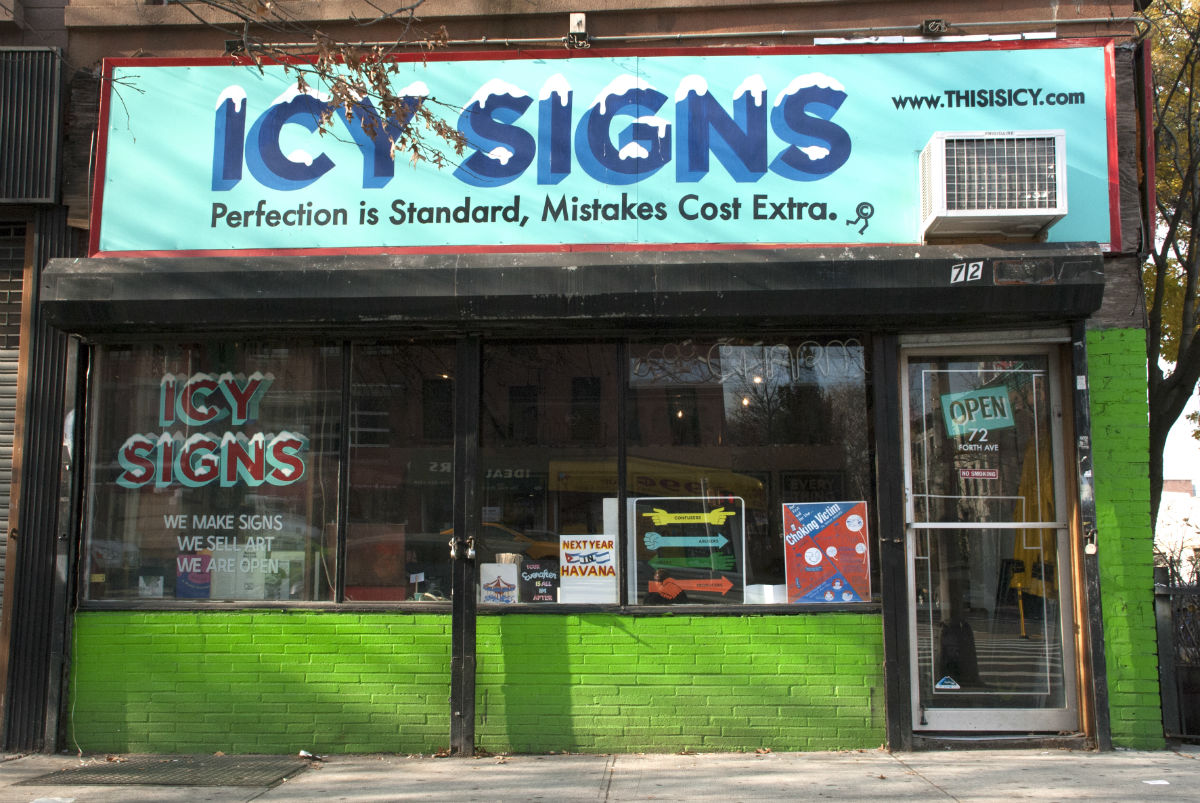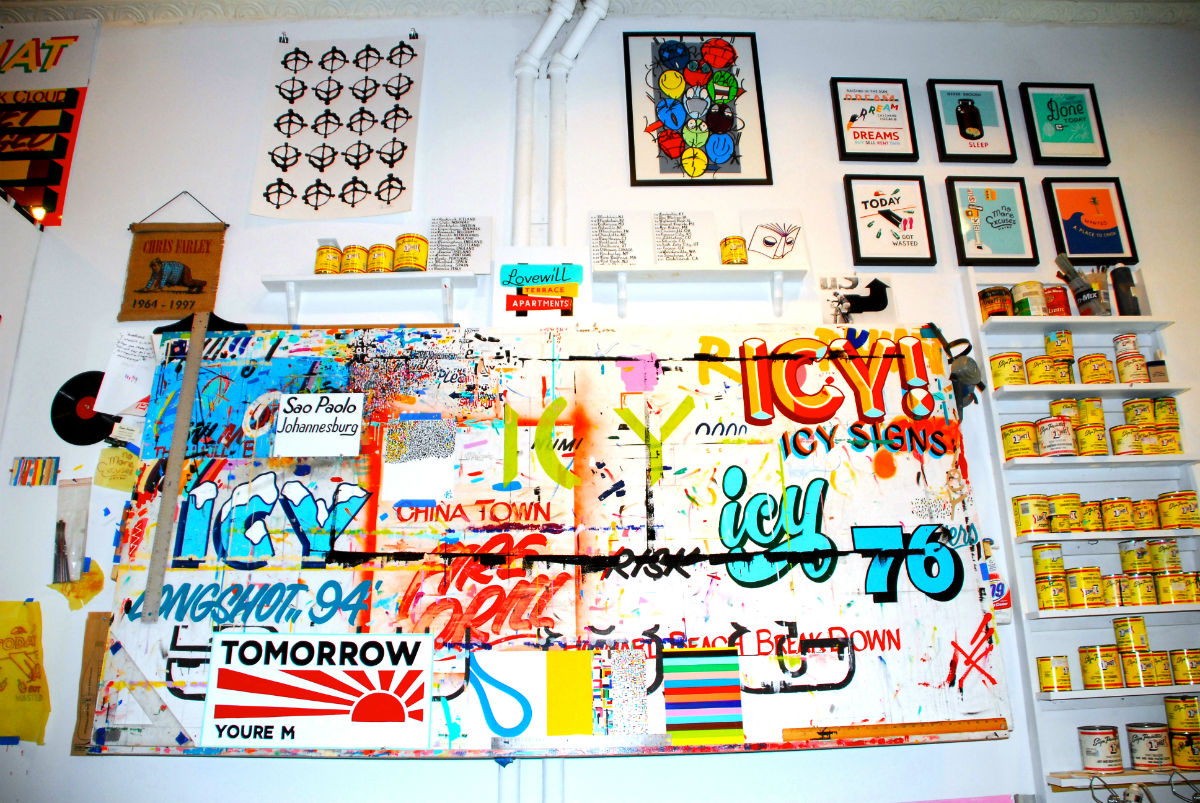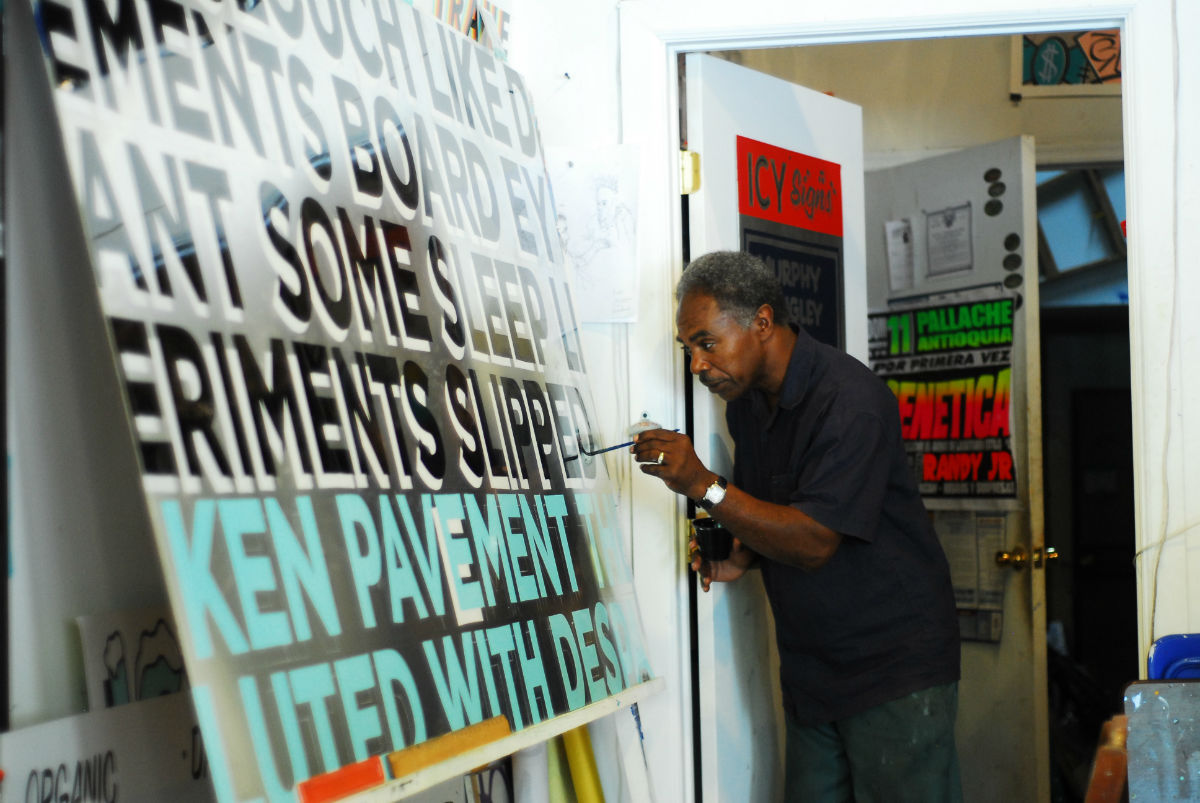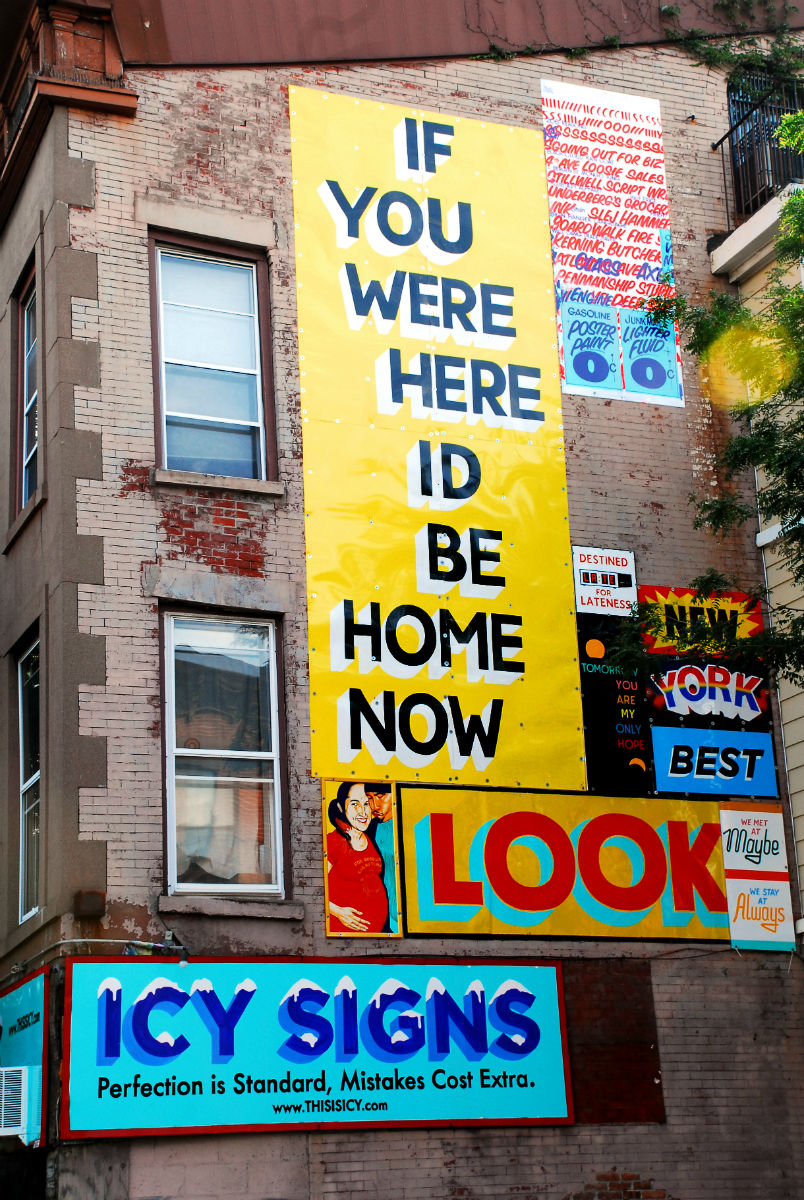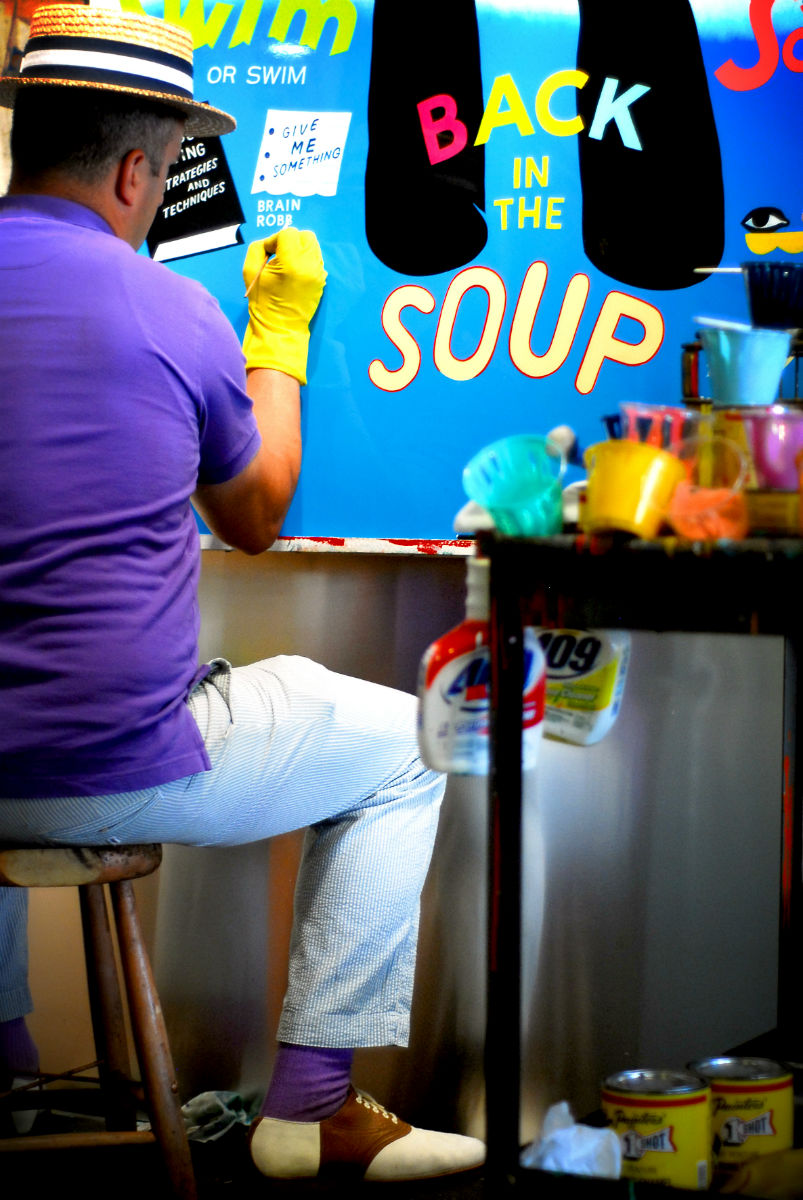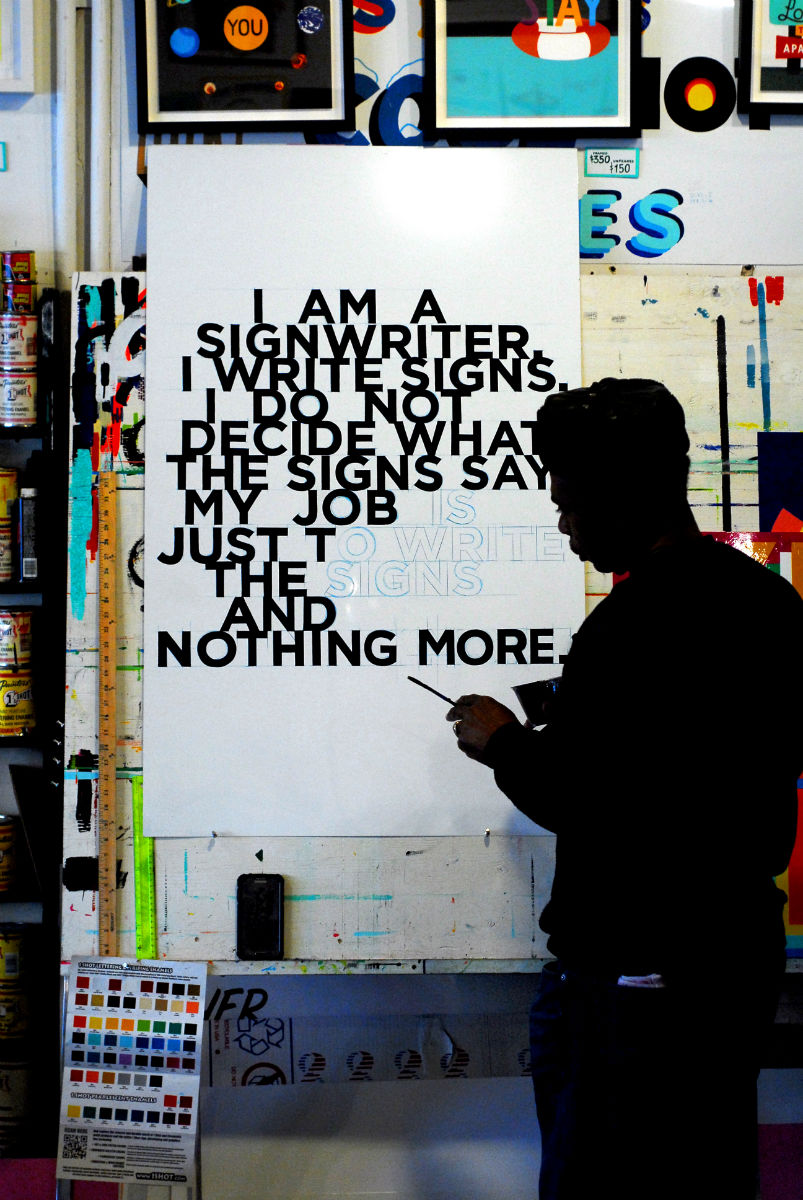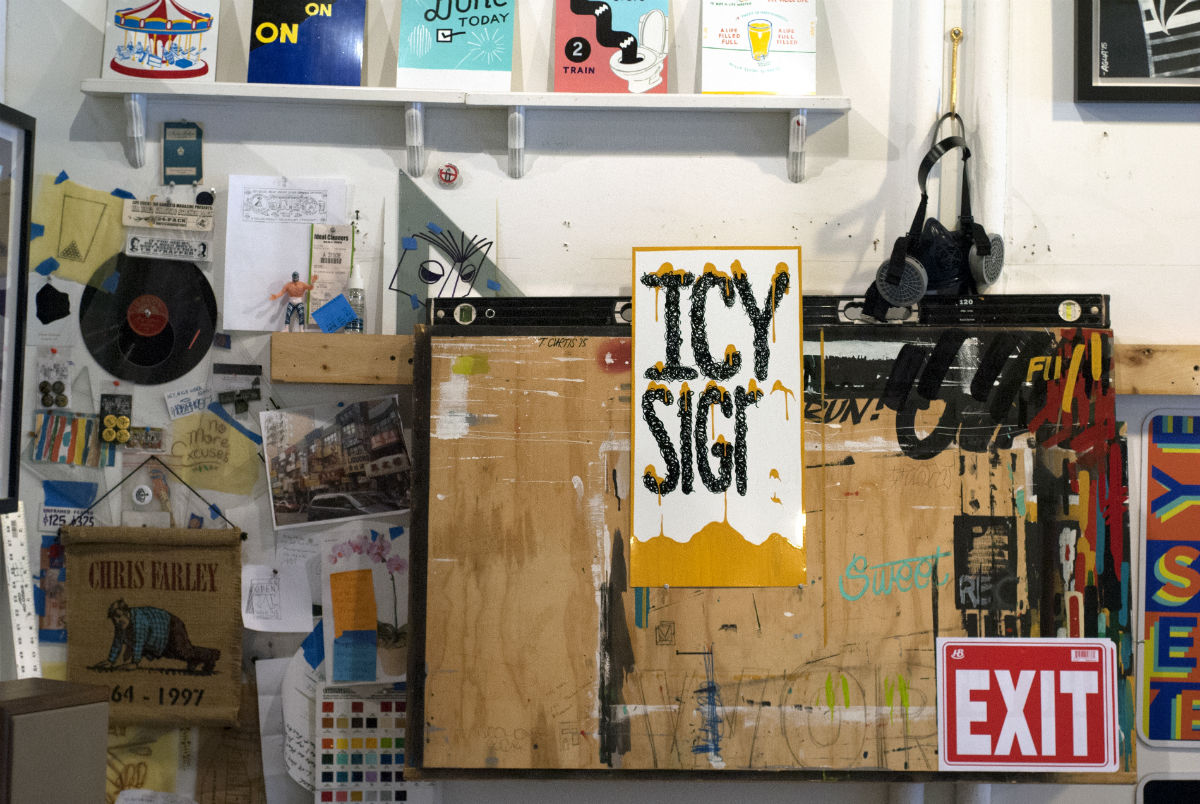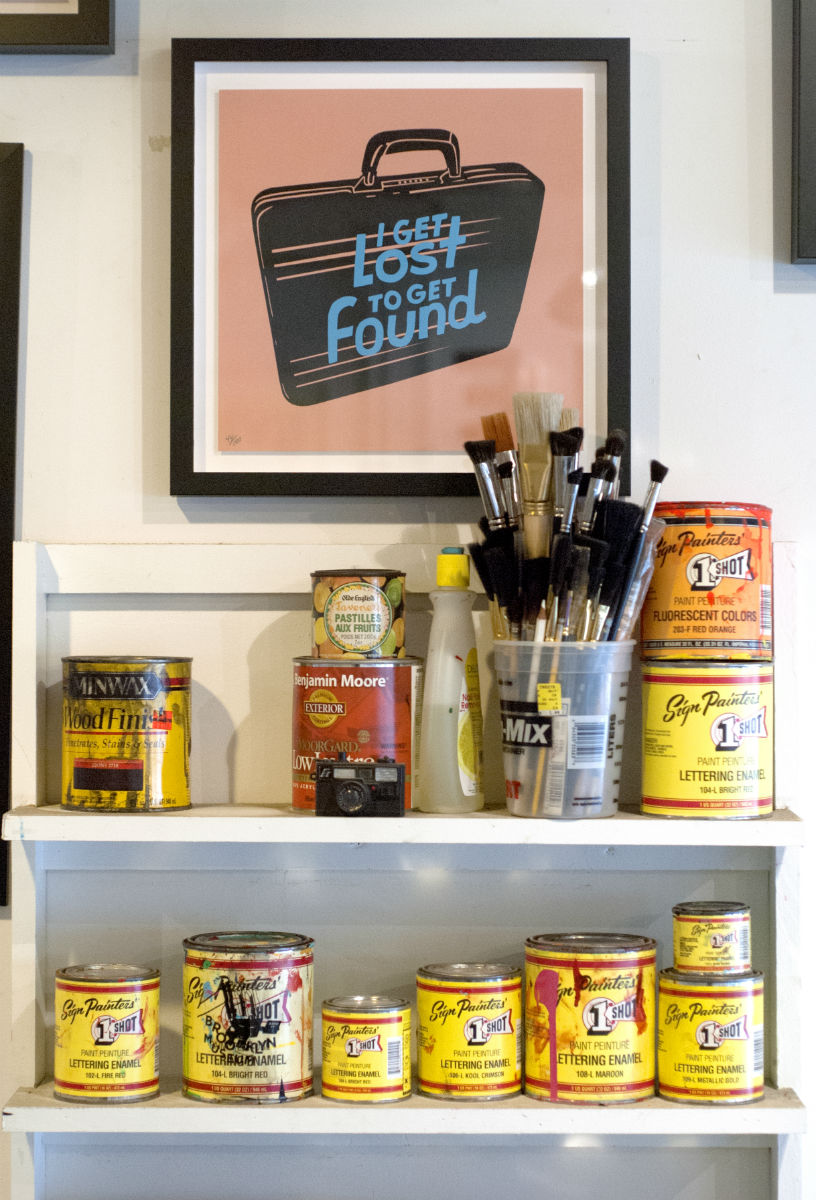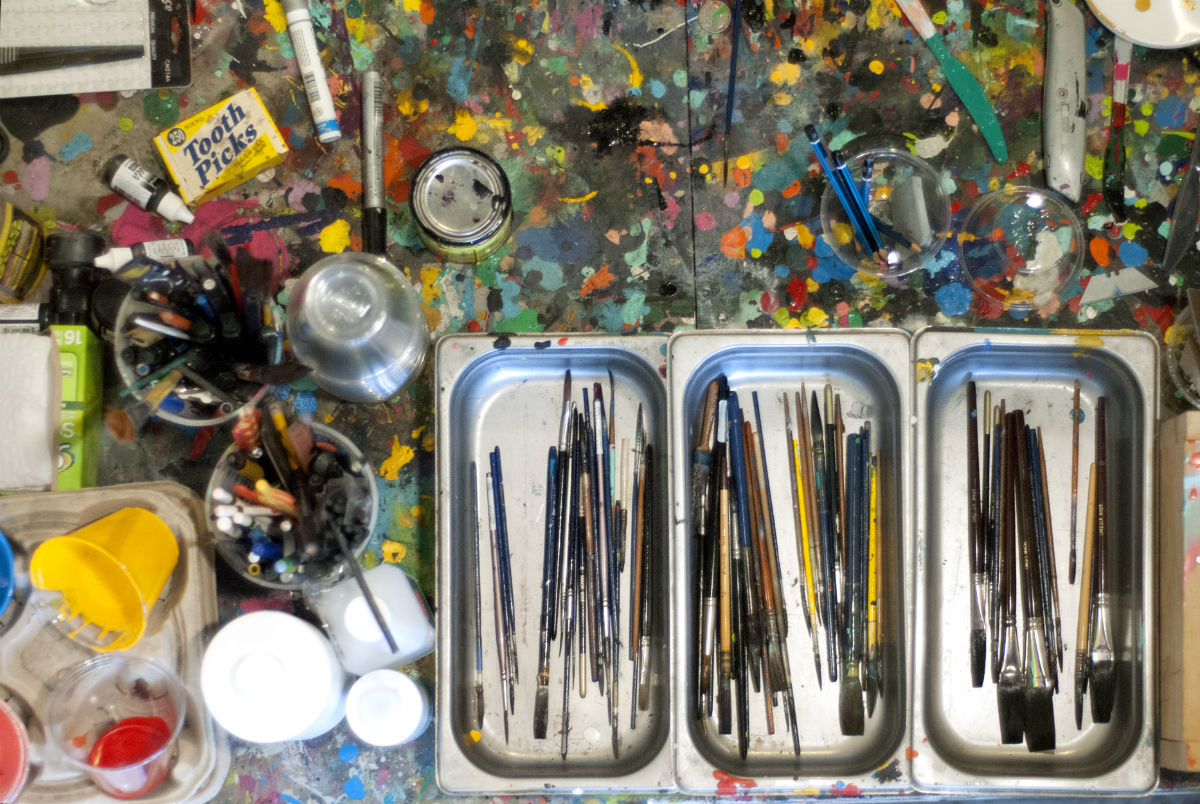You can set up a sign shop with a sheet of plywood, two hinges and a length of two-by-four lumber. That’s the easy part. You need to find help to set it up; ideally, quality people who have skills and strength to share. And that’s the hard part. In the case of ICY SIGNS, finding the help is the best part.
Mike Levy and Dan Murphy showed up when another guy called out. They had great attitudes and great music to share, and that other guy never got called back. Learn a lesson from that: your entire future could depend on it. Then, on a sign project in Cincinnati, my hosts asked me if I wanted to work with a local sign writer named Justin Green. "Legendary inventor of the autobiographical comic Justin Green?" Yes! We had a great summer fighting in front of a class of kids we were teaching to sign paint. It was loud but not angry; we were just getting to know each other. At the end of the summer I told him, "You’re like a father to me. I hate my father." He understood, we're great friends now.
I drafted Matt Wright to set up the shop in Coney Island. Matt apprenticed with Peter Levine and Ray Padilla at Quik Signs in Brooklyn, and the last sign writer I know of to get trained in the classic "sweep the floor and get mocked" tradition. Matt brought Mike Langley, who is the rarest of the rare. He can build stairs and paint inch-high letters. Mimi Gross painted with us in Coney—a fine artist and the flesh-and-blood memory of art in NYC. She tells me to paint what I see and not make it up, and because of this, we were the first Coney Island sign painters in 40 years to paint knishes that looked like knishes.
Alexis Ross got wind of what we were up to in Coney and we watched him boss up. He only knew a couple things about sign painting before he came out, and then showed us how to make it a fully functioning scene. I met Sean Barton in Pittsburgh, then he moved to LA and within a year of painting with the pros out there, he got so good I couldn’t see him with a telescope. Eric Davis stopped painting signs in the 1990s and didn’t think he would ever do it again until he saw our shop. Finally, the newest and rawest talent on the bench, Tim Curtis, fresh from 7.5 years in lock-up, went from an 80 square-foot cell to the 6,400 square-foot rotunda of the Brooklyn Museum. He's there now, writing out another chapter of the ICY SIGNS story, one line at a time. —Steve Powers
All images courtesy Icy Signs.
----
Originally published in the February, 2016 issue of Juxtapoz, available here.

